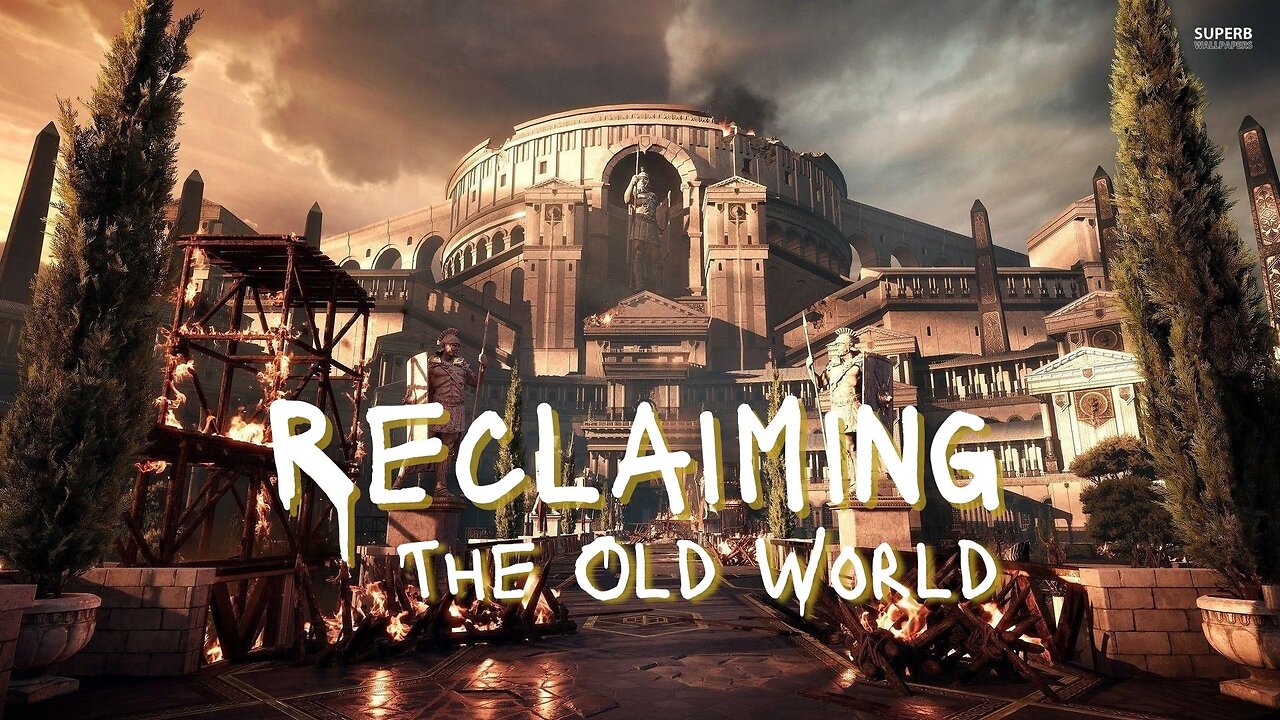Premium Only Content

A Look At Reclaiming The Old World by Introducing The Industrial Revolution
"The mainstream account of our recent history relies on cause and effect to explain our present civilization. One of the examples of "incontrovertible evidence" cited is the process of the Industrial Revolution. This process explains how an agrarian civilization of thousands of years of stagnation or at best limitation took the great leap forward to modernity. This exploration examines the account of the Industrial Revolution and considers how there may be another, more plausible explanation behind this stupendous advancement in humanity."
SOURCE
Lucius Aurelian
The Industrial Revolution, sometimes divided into the First Industrial Revolution and Second Industrial Revolution, was a period of global transition of the human economy towards more widespread, efficient and stable manufacturing processes that succeeded the Agricultural Revolution. Beginning in Great Britain, the Industrial Revolution spread to continental Europe and the United States, from around 1760 to about 1820–1840. This transition included going from hand production methods to machines; new chemical manufacturing and iron production processes; the increasing use of water power and steam power; the development of machine tools; and the rise of the mechanized factory system. Output greatly increased, and the result was an unprecedented rise in population and the rate of population growth. The textile industry was the first to use modern production methods and textiles became the dominant industry in terms of employment, value of output, and capital invested.
An economic recession occurred from the late 1830s to the early 1840s when the adoption of the Industrial Revolution's early innovations, such as mechanized spinning and weaving, slowed as their markets matured; and despite the increasing adoption of locomotives, steamboats and steamships, and hot blast iron smelting. New technologies such as the electrical telegraph, widely introduced in the 1840s and 1850s in the United Kingdom and the United States, were not powerful enough to drive high rates of economic growth.
Rapid economic growth began to reoccur after 1870, springing from a new group of innovations in what has been called the Second Industrial Revolution. These included new steel-making processes, mass production, assembly lines, electrical grid systems, the large-scale manufacture of machine tools, and the use of increasingly advanced machinery in steam-powered factories.
-
![The Man In The Red Cap Ushers In The Purification | Hopi Prophecy [Timestamp 16:35]](https://1a-1791.com/video/s8/1/E/k/O/v/EkOvv.0kob-small-The-Man-In-The-Red-Cap-Ushe.jpg) 26:46
26:46
The Aquarius Bus
8 months agoThe Man In The Red Cap Ushers In The Purification | Hopi Prophecy [Timestamp 16:35]
2.53K7 -
 32:50
32:50
Uncommon Sense In Current Times
19 hours ago $1.31 earnedIs War Ever Just? Frank Turek Explains Just War Theory & Christian Ethics
27.6K5 -
 25:57
25:57
DeVory Darkins
1 day ago $21.47 earnedNewsom suffers HUMILIATING SETBACK after FATAL Accident as Trump leads HISTORIC meeting
62.8K151 -
 LIVE
LIVE
FyrBorne
14 hours ago🔴Warzone M&K Sniping: First Impressions of Black Ops 7 Reveal
163 watching -
 8:16
8:16
MattMorseTV
19 hours ago $11.37 earnedTrump’s name just got CLEARED.
104K90 -
 2:01:55
2:01:55
MG Show
23 hours agoPresident Trump Multilateral Meeting with European Leaders; Trump Outlines Putin Zelenskyy Meeting
48.9K28 -
 DVR
DVR
DoldrumDan
5 hours agoCHALLENGE RUNNER BOUT DONE WITH ELDEN RING NIGHTREIGN STORY MODE HUGE GAMING
28.6K -
 10:59
10:59
itsSeanDaniel
1 day agoEuropean Leaders INSTANTLY REGRET Disrespecting Trump
39K38 -
 16:43
16:43
GritsGG
19 hours agoThey Buffed This AR & It Slaps! Warzone Loadout!
38.5K3 -
 2:05:30
2:05:30
Side Scrollers Podcast
23 hours agoEveryone Hates MrBeast + FBI Spends $140k on Pokemon + All Todays News | Side Scrollers Live
127K16